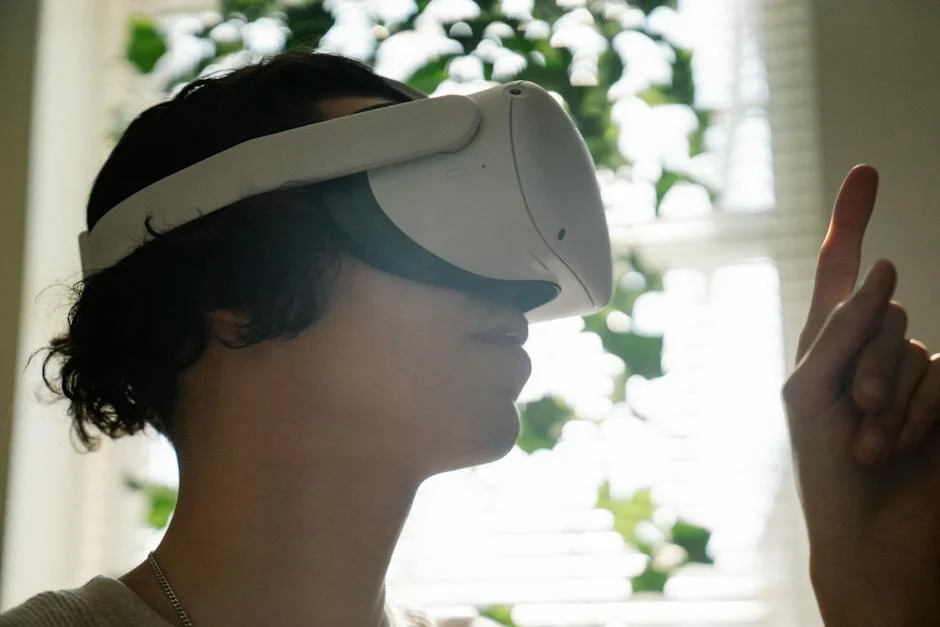Introduction to virtual reality in education
Virtual reality (VR) is revolutionizing the way we learn and engage in educational environments. With VR, students can immerse themselves in realistic and interactive simulations, bringing abstract concepts to life and enhancing their understanding of complex subjects. From exploring historical landmarks to dissecting virtual organisms, the possibilities are endless. Virtual reality provides a unique and engaging learning experience that promotes active participation and critical thinking. As technology continues to advance, the future of virtual reality in education holds great promise, with the potential to transform traditional classrooms into dynamic and interactive learning spaces.

Benefits of using virtual reality in the classroom
Using virtual reality in the classroom offers a multitude of benefits for both students and teachers. By immersing students in a virtual environment, they can explore and interact with concepts that may otherwise be difficult to grasp. This hands-on approach enhances their understanding and retention of knowledge. Additionally, virtual reality allows for personalized learning experiences, catering to individual student needs and learning styles. Teachers can also benefit from virtual reality by accessing real-time data on student progress and adjusting their teaching strategies accordingly. With the future of education heading towards a more immersive and interactive approach, virtual reality is poised to revolutionize the way we teach and learn.
Examples of virtual reality applications in education
Virtual reality (VR) has revolutionized the way we learn and engage with educational content. From interactive history lessons that transport students to ancient civilizations to immersive science experiments that allow them to explore the inner workings of a cell, the applications of VR in education are truly remarkable. One example is the use of VR to simulate real-world scenarios, such as medical procedures or dangerous environments, providing students with a safe and hands-on learning experience. Another example is the ability to take virtual field trips to places that would otherwise be inaccessible, like the depths of the ocean or outer space. These experiences not only enhance students’ understanding of complex concepts but also foster a sense of curiosity and excitement for learning. As technology continues to advance, the possibilities for virtual reality in education are endless, promising a future where learning knows no bounds.
How virtual reality enhances student engagement and participation
Virtual reality has emerged as a powerful tool in education, revolutionizing the way students engage and participate in the learning process. By immersing students in realistic and interactive virtual environments, VR technology offers an unparalleled level of engagement that traditional teaching methods cannot match. Studies have shown that virtual reality can enhance student motivation, attention, and retention of information. It allows students to actively explore and manipulate concepts, fostering a deeper understanding of complex subjects. Moreover, virtual reality provides opportunities for collaborative learning, as students can interact with their peers and instructors in the virtual world. This innovative technology is paving the way for a more immersive and effective educational experience, where students become active participants in their own learning journey.
The potential impact of virtual reality on learning outcomes
Virtual reality has the potential to revolutionize education and significantly impact learning outcomes. By immersing students in realistic and interactive virtual environments, VR technology can enhance their understanding and retention of complex concepts. Research has shown that students who learn through virtual reality exhibit higher levels of engagement and motivation, leading to improved academic performance. VR can also provide unique opportunities for experiential learning, allowing students to explore historical events, visit far-off places, or even simulate scientific experiments that would otherwise be inaccessible. As this technology continues to evolve and become more accessible, the future of education is set to be transformed by the power of virtual reality.
Challenges and limitations of implementing virtual reality in education
Implementing virtual reality in education comes with its fair share of challenges and limitations. One of the main challenges is the cost of the technology, as VR equipment can be quite expensive, making it difficult for schools and institutions with limited budgets to adopt. Additionally, there is a learning curve for both teachers and students in using VR technology effectively. It requires training and familiarity with the equipment and software, which can take time and resources. Furthermore, there are concerns about the potential negative effects of prolonged VR use, such as motion sickness and eye strain. Despite these challenges, the potential benefits of virtual reality in education, such as immersive learning experiences and enhanced engagement, make it an exciting and promising tool for the future.
Current trends and future developments in virtual reality technology
Virtual reality (VR) technology has made significant advancements in recent years, and its potential in the field of education is truly groundbreaking. Current trends in VR technology include the development of more immersive and realistic experiences, such as the use of haptic feedback and motion tracking. These advancements allow students to interact with virtual environments in a way that closely mimics real-life scenarios, enhancing their learning and understanding. Looking to the future, we can expect even more exciting developments in VR technology, such as the integration of artificial intelligence and the creation of virtual classrooms where students from around the world can collaborate and learn together. With the ability to transport students to any location or time period, virtual reality is poised to revolutionize education and provide endless opportunities for immersive and engaging learning experiences.
Practical considerations for integrating virtual reality into the curriculum
Integrating virtual reality into the curriculum is an exciting prospect for the future of education. However, there are several practical considerations that need to be taken into account. Firstly, schools must ensure that they have the necessary hardware and software to support virtual reality experiences. This includes high-quality headsets, powerful computers, and a reliable network infrastructure. Additionally, teachers need to be trained in how to effectively incorporate virtual reality into their lesson plans, as well as how to manage and supervise students during virtual reality sessions. Lastly, there is the cost factor to consider, as implementing virtual reality technology can be expensive. Despite these challenges, the benefits of using virtual reality in education, such as enhanced engagement, immersive learning experiences, and the ability to explore places and concepts that would otherwise be impossible, make it a worthwhile endeavor.
Best practices for using virtual reality in educational settings
Using virtual reality in educational settings can greatly enhance the learning experience for students. However, it is important to follow best practices to ensure that virtual reality is used effectively. One key practice is to carefully select virtual reality experiences that align with the curriculum and learning objectives. This helps to ensure that students are engaged and actively learning relevant content. Additionally, it is crucial to provide proper guidance and supervision when students are using virtual reality, as it can be an immersive and potentially overwhelming experience. Finally, integrating virtual reality with other teaching methods, such as discussions and reflections, can help to reinforce learning and make the experience more meaningful. By following these best practices, educators can harness the power of virtual reality to create engaging and impactful learning experiences for their students.
Conclusion and the future of virtual reality in education
The future of virtual reality in education is bright and promising. As technology continues to advance, virtual reality has the potential to revolutionize the way we learn and engage with educational content. It allows students to immerse themselves in virtual environments, bringing concepts to life and enhancing their understanding and retention of information. Additionally, virtual reality can provide unique and interactive experiences that are not possible in traditional classroom settings, such as virtual field trips and simulations. As the technology becomes more accessible and affordable, we can expect to see virtual reality becoming an integral part of education, opening up endless possibilities for students and educators alike.
